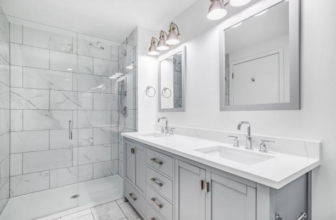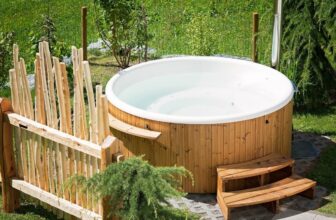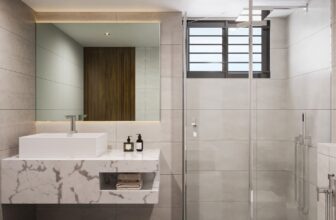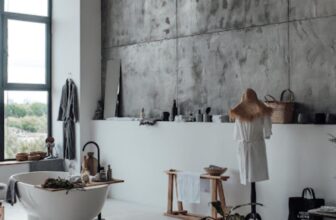Vitreous China vs Porcelain – Which One is Better?
When building a house or simply renovating the bathroom, you’re sure to get plenty of recommendations on what kind of sanitaryware to install.
With all the materials available, making the right choice that is practical, within the budget, and a good fit for your bathroom is not easy.
Especially since, more often than not, people are not fully aware of the advantages and disadvantages of certain materials.
Moreover, it’s often difficult to distinguish one material used for sinks, toilets, and bathtubs from another.
This is rather understandable as they often look a lot alike.
The two materials or techniques that frequently get confused are vitreous china and porcelain.
Some homeowners are not even sure if they’re one and the same.
To clear things up a bit, I’ll compare vitreous china vs porcelain, explain the relationship between the two, and which may be a better choice for a particular bathroom.
Vitreous China – Information
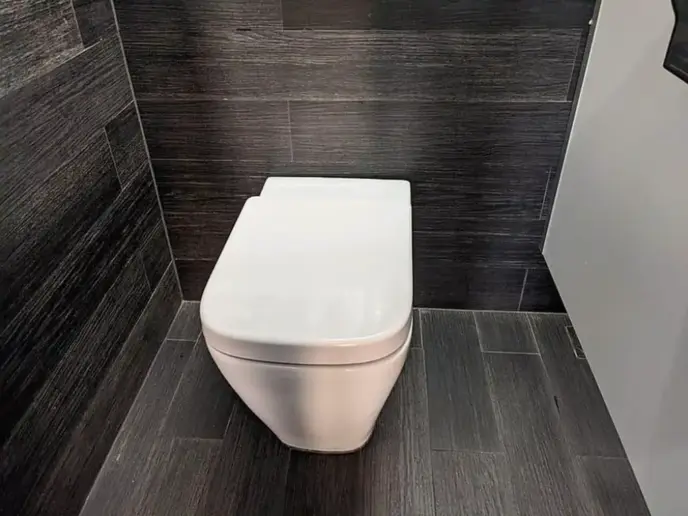
When it comes to materials they’re made of, vitreous china is not exactly different than porcelain.
Rather than a different sanitaryware material, it’s a glazing technique used to add enamel coating to porcelain after it’s been fired.
However, the confusion comes from the fact that the name vitreous china is often used for a finished piece of sanitaryware as a whole.
The technique of enamel coating is very old and has been first used in Ancient Egypt.
The point of the process of adding vitreous china glazing is to make porcelain tougher, shinier, and less porous.
Nowadays, it’s used on a variety of bathroom elements, such as sinks, toilets, bathtubs, or bides, and occasionally on kitchen items.
Material
Vitreous china itself is a glass-particulate composite. Even the name literally means glass-like.
This means that the vitreous enamel mixture is mostly made of glass particles, with some other elements added to provide different characteristics.
Another major component is clay which gives it flexibility and the ability to create different shapes.
The mixture also includes quartz, responsible for shrinkage reduction, and feldspar which provides a high density of the final product and makes it less porous.
The vitreous china glazing process starts once the process of making porcelain is finished.
In this case, the clay mixture used for porcelain is subjected to the second firing process at much higher temperatures.
When the heat reaches a high enough level, the enamel liquid glass coating is applied on top of the porcelain.
The final result is a glossy, tough, and water-resistant finished product.
Maintenance
Vitreous china products require relatively low maintenance effort, but you should clean them as often as possible.
Doing this will prevent the buildup of soap scum and other bacterial growth.
The best thing to do is to keep the washing cloth next to the sink or other bathroom elements, and just wipe it after use.
Be aware that, while vitreous china is tough and durable, you should still avoid using abrasive and intensive claiming products as well as highly coarse sponges.
For more heavy-duty cleaning, you can use a mild and non-abrasive liquid claiming product.
Pros and Cons of Vitreous China
Porcelain – Information
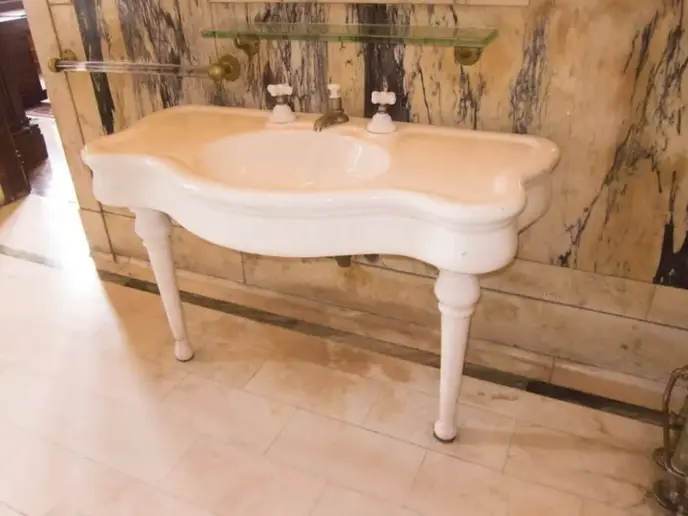
Porcelain sinks, bathtubs, and other sanitaryware are probably the most used bathroom elements and can be seen in millions of houses.
This is mainly due to the fact that they’re rather affordable, while still providing solid quality and durability.
Porcelain products come in a variety of shapes and are an easy fit for almost any bathroom interior design solution.
Material
The basic component of porcelain is refined fine clay. Or, to be more precise, a fine silicate-based clay mineral.
To make it more dense and hard, the clay is heated in an oven or kiln at temperatures between 1,200 and 1,500 degrees Fahrenheit.
This process also provides porcelain products with a more smooth and glossy finish.
Some porcelain-made bathroom elements are made of solid porcelain. However, more commonly porcelain is used as a coating for the metal base.
In the old days, the metal used was usually cast iron, but more recently, stainless steel is more common.
The porcelain used for these purposes is strengthened by adding glass and metal.
Maintenance
When it comes to ease of maintenance and cleaning, porcelain is rather similar to vitreous china.
Regular daily, or at least weekly, cleaning should take care of dirt, grease, soap scum, and other stuff that builds up in the sink or bathtub.
Things to avoid are highly abrasive cleaning liquids or pads that may damage the surface and products such as vinegar that have high acid content.
After every cleaning job, you should dry the surface with a soft cloth to prevent stains.
Pros and Cons of Porcelain
Vitreous China vs Porcelain – Which One is Better?
As always, the better product is the one that better suits you.
So, when choosing between vitreous china and porcelain you should think about your needs, budget, and the general idea of what you think a bathroom should look like.
The whole point of vitreous china glazing is to make porcelain more tough and durable,.
So if you want a more resistant and strong bathroom element you should choose one enameled with vitreous china.
Especially if you’re a bit clumsy and often cause drops, spills, and other mishaps.
The glazing also provides a shiny and sleek appearance which is preferred in most modern bathrooms.
Porcelain bathroom items, on the other hand, are more suitable if you’re going for a vintage overall look.
As for the price, vitreous china and porcelain are in about the same range, especially in the base-level offer, but high-end vitreous china products can be rather expensive.

